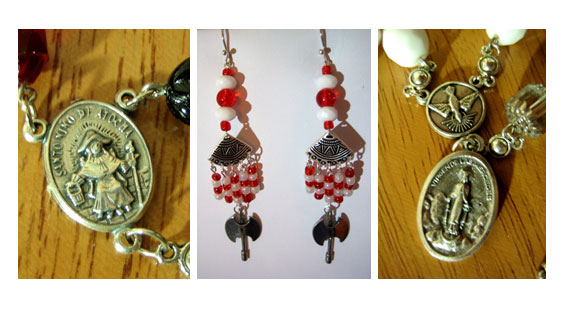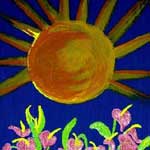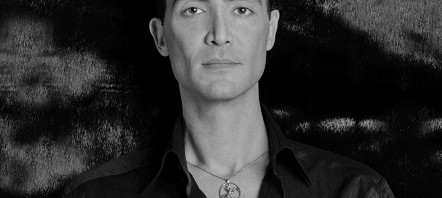Orishas, Rosaries, and Radio Bastet: An interview with Marisa Young of Boveda Beads
WordPress database error: [Incorrect DATE value: '']
SELECT * FROM wp_gigpress_artists AS a, wp_gigpress_venues as v, wp_gigpress_shows AS s LEFT JOIN wp_gigpress_tours AS t ON s.show_tour_id = t.tour_id WHERE show_related = 31 AND show_expire != '' AND show_status != 'deleted' AND s.show_artist_id = a.artist_id AND s.show_venue_id = v.venue_id ORDER BY show_date asc,show_expire asc,show_time asc
Although many people associate rosaries almost exclusively with Catholicism, in fact, the tradition of praying with beads extends to many spiritual traditions. Marisa Young, Santera and priest of Yemaya, is the creative genius behind Boveda Beads, a company that offers spiritually powerful jewelry and rosaries dedicated to Orishas. It is my pleasure to interview Marisa about Orisha rosaries, Boveda Beads, her own spiritual journey and more
What are Orisha rosaries?
Orisha rosaries are a concept that I think I came up with! At least I’d never seen anything comparable around. A little background first: When African slaves were brought to Cuba and other countries in the Caribbean, they were forcibly converted to Catholicism. Not all were eager to abandon their native spirituality, so they “hid” their orishas (aspects of God with roots in the natural world) behind certain Catholic saints whose attributes reminded them of the orishas. (Some writers on the subject use the term “syncretization” to describe this relationship, but I avoid it as it implies that the saint and the orisha became one and the same in the eyes of the worshipper, and this just isn’t so.) This is where the term Santeria – “the way of the saints” – comes from, a term that was used derisively and dismissively and still has many negative connotations today.
Many practitioners and priests of Lucumi (the proper title for this Afro-Cuban religion) are attempting to distance themselves from any Catholic overlay to the religion, and honestly, with such a history of kidnapping, slavery and forced conversion, who can blame them? However, there are many “old school” Lucumi who still resonate with the orisha/saint combinations, so for them, an orisha rosary is my attempt to join the attributes of the saint and the attributes of the orisha into a single devotional object. I combine the traditional colors of the orisha with a rosary centerpiece or medal that depicts the saint with which the orisha has traditionally been associated. For instance, Eleggua, the Trickster, Road Opener and Lord of the Crossroads, has been associated with El Niño de Atocha, St. Anthony and St. Martin de Porres. His colors are red and black. So, an Eleggua rosary would consist of red and black beads, with a centerpiece or medal depicting one of those saints. I could also add a charm representing one of his symbols, such as a cigar or a key.
What inspired you to begin creating these rosaries?
Well, I taught myself to make rosaries for the missions years ago. As I drifted away from Christianity, I found myself still entranced by them and searching for a way to incorporate them into a non-Christian practice, if such a thing was possible. I saw many older Lucumi priests who carried their rosaries to church on Sunday morning, then danced for their orishas at a bembé in the afternoon, and I thought, “Wouldn’t it be great to have something tangible that combined both spiritual paths as seamlessly as these people have managed to do?” I asked members of my godfamily what they thought of the idea, and after some very enthusiastic responses, I decided to throw caution to the wind and go for it!
You describe your method of making rosaries as “old fashioned”—could you explain what this means and how it’s different from other methods?
A lot of folks use individual eye pins to chain rosary beads together these days. I tried it, and it just doesn’t work for me. I taught myself to make rosaries with heavy gauge coiled wire, which takes a little longer I believe, but I’m much more pleased with the results. I do plan on making some cord rosaries for Nana Buruku, who takes no metals in any of her accoutrements – this is going to be quite a challenge for me!
Can you tell us a little about yourself?
Well, I live in the St. Johns neighborhood of Portland, Oregon, in a 103 year old house with my husband and three cats. I dedicated myself to the Goddess in 1996 and after exploring many Pagan spiritual paths (but always knowing I was a Witch), I began studying African-American hoodoo and rootwork in 2005. This led to my discovery of the African Diaspora religions – Lucumi, Candomblé, etc. – and my admittance into a brand new but slowly growing Lucumi ile (house) here in Portland. I began attending rituals (most of them in California, where my godmother lived at the time), learning, studying and working, working, working! Lucumi is a very intensive, hands-on religion. You learn by doing! I discovered the orisha who ruled my head – no huge surprise, it was Yemaya! I was finally initiated as her priest in 2009 and began my year in white as a iyawo (“bride” or new initiate). It was the most amazing and transformative year of my entire life! I still can’t believe that I am really a santera now and a priest of this most beautiful and powerful Mother. The Goddess as Mother has always resonated with me, and little did I realize what that would end up meaning for me when I dedicated myself to “The Goddess” back in ‘96!
Your company is called Boveda Beads- could you explain what “boveda” means?
Absolutely. The boveda is what I like to call Eggun (Ancestor) Central. It’s a table covered with a white cloth (also known as la mesa blanca), on which are placed glasses of water, candles and personal objects that serve as vessels for the spirits of the ancestors with which you work. These ancestors are usually blood relatives, although they don’t necessarily have to be. Espiritismo (working with the spirits) is a big part of Lucumi practice, and discovering which eggun want to work with you spiritually is very important. My original thought with the orisha rosaries would be that people could place them on their bovedas, or with their orishas, or use them however they felt led to. Also, I’m a big fan of alliteration.
Can you tell us a little about the company—when was it founded? What other products do you sell? How can people obtain your products?
It was officially registered with the city of Portland in 2009, although I didn’t really get it going until early 2010 when I opened an Etsy shop. It has its own website now at http://www.bovedabeads.com . I also make orisha-themed earrings, and hope to be branching out soon with bracelets, altar cloths dyed in orisha colors, and who knows what else? My latest products that I’m really excited about are car/auto rosaries that you hang from the rear-view mirror, dedicated to Aganyu/St. Christopher. I made up a batch of them and gave them all away to godfamily! So stay tuned!
Oh, and I almost forgot. Several of my customers have asked if my rosaries are appropriate to wear as a necklace. Actually, due to the larger (10mm) beads I use for them, and some of the more decorative links which really don‘t have the structural integrity needed for a piece of jewelry, I wouldn’t recommend it. My godsister happily put on the Chango rosary I made for her, and it promptly broke a few minutes later. So, I’ve begun making necklace rosaries with the smaller 8mm beads and sturdy links, and I do think these will hold up better as necklaces. Stay tuned for these also!
What has been your most popular rosary? Your most unusual or unique?
I would have to say the Yemaya and Oshun rosaries! (Really, who is surprised? [grin]) Frankly I sell more earrings than rosaries, but those two have been especially popular. To date, I’d have to say that the latest Oya rosary I made is very much on the unique side. I wanted to honor her aspect as Guardian of the Cemetery, so I used copper skull beads for the Our Father beads. I must admit it really turned out great!
Do you do custom orders?
Absolutely! I did one recently for a young man who was told during a misa (“spiritual mass” for the ancestors at the boveda) that he should wear Ochossi’s bow and arrow around his neck at all times. I made him a necklace rosary in Ochossi’s colors of blue and gold, with a bow and arrow charm instead of a crucifix. Which reminds me – not everyone who practices Lucumi is of Christian heritage. My godsister with the Chango rosary is Jewish, so I used a Star of David charm instead of a crucifix. The possibilities are endless! Just ask!
Could you tell us about your other company, Radio Bastet?
Oh yeah! Radio Bastet is a pure labor of love. I am crazy about belly dancing, and a while back I started collecting old belly dance records. I started thinking what a shame it was that more people didn’t know about some of the older artists. My husband has a very good set-up for digitizing record albums, so I had him teach me how to do it and I set about converting all my albums into sound files on the computer. I started a station at Live365.com in 2002, where I played the tracks like a radio show and called it Radio Bastet, after the Egyptian Goddess of music and dancing. It evolved after that into streaming audio at http://www.radiobastet.com, and now I’m podcasting and loving it! It’s amazing – I’ve got fans all over the world, and have heard from many of the musicians and dancers of the “golden era” of belly dance that the albums come from (the 1950s through the 1980s). It’s simply a blast!
Is there anything you would like to add, Marisa?
I just want to say how honored I am that you consider me worthy of an interview! I’ve loved your books for years; they have helped me become a better Witch and for that I am eternally in your debt! I wish you and your readers bountiful lives full of blessings, love and magic!


